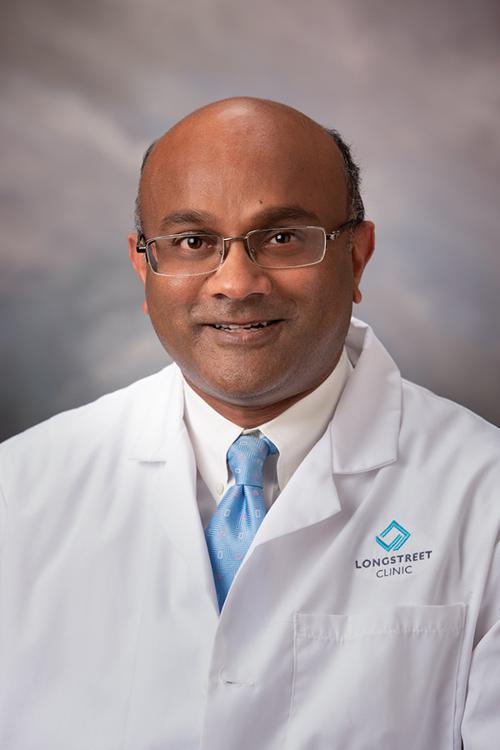When you think about cancer affecting men, prostate cancer probably comes to mind. How much do you know about testicular cancer?
Testicular cancer is relatively rare, affecting one in every 250 American men. According to the American Cancer Society, just under 10,000 new cases of testicular cancer will be diagnosed this year.
While it’s relatively uncommon, this type of cancer is more likely to affect younger men. Take some time to learn about testicular cancer to protect yourself or the men in your life.
What is testicular cancer?
Testicular cancer is a type of cancer that originates in the testicles, which are also called the testes. These organs are around the size of golf balls in an adult male and tucked inside a sac of skin known as the scrotum.
The testes have two primary responsibilities—they make sperm and they produce male hormones. Inside the testicles there are many different kinds of cells, and each can be affected by cancer.
Testicular cancer originates in the testicles, but in some cases, other types of cancer may spread (metastasize) to the testes.
Who’s at risk of developing testicular cancer?
Testicular cancer can affect anyone with testicles at any age, but certain factors increase the risk. Risk factors include:
- Being between the ages of 20 and 39
- Being a Caucasian male
- Having a family history of testicular cancer
- Having Klinefelter’s syndrome, a genetic condition when a boy is born with an extra X chromosome
- Having a past personal history of testicular cancer
- Having had abnormal testicle development
- Having a history of undescended testicle
- Using tobacco products
The average age at diagnosis is 33, but up to 6 percent of all cases of testicular cancer occur in children and teens.
In most cases, testicular cancer cannot be prevented. Many men and boys who develop testicular cancer have no known risk factors, so no discernible cause of cancer.
A self-exam is how most cases of testicular cancers can be detected and early detection greatly increased the chance of a cure from testicular cancer.
Types of testicular cancer include:
What are the symptoms of testicular cancer?
Many of the symptoms of testicular cancer can also be related to another, noncancerous condition. Still, it’s important to keep an eye out for symptoms, including:
- A painless lump or swelling in the testes
- Aches in the lower abdomen or groin
- Breast growth or soreness due to elevated hormone levels
- Buildup of fluid in the scrotum
- Changes in the feel of the testicle
- Early puberty
- Pain in the testicle or scrotum
A lump or swelling in the testicle is often the first obvious symptom of testicular cancer.
As the cancer spreads, it can also cause other symptoms, such as lower back pain, headaches, shortness of breath, chest pain, or a cough.
Is there a screening for testicular cancer?
When you think about cancer screenings, you probably think of tests such as mammograms or colonoscopies. There isn’t a screening of that sort for testicular cancer.
With that said, though, most primary care providers include examining the testicles as part of an annual checkup or physical exam for boys and men. These examinations can help spot lumps or swelling that might not be noticed by the patient.
Your medical provider may also recommend regular self-exams of the testicles to check for any changes. Talk with your provider about these exams if you have any known factors that put you at an increased risk of testicular cancer.
How is testicular cancer diagnosed and treated?
If you’re experiencing symptoms or your provider otherwise suspects you may have testicular cancer, a number of tests can be used to confirm a diagnosis. These tests may include ultrasound, a serum tumor marker test, and inguinal orchiectomy, which removes the testicle to check for cancer cells.
If you’re diagnosed with testicular cancer, your treatment plan will be based on several factors, including the type of testicular cancer, stage of the cancer and whether it has spread. Treatment may include surgery to remove the testicle and/or surrounding lymph nodes, radiation therapy, chemotherapy, or high-dose chemotherapy paired with a stem cell transplant.
Treatment can sometimes impact fertility, so young men and boys who hope to have children in the future may want to talk with a provider about banking sperm prior to treatment.
The good news is: The vast majority of testicular cancer cases are curable! The five-year survival rate for testicular cancer is 95 percent.
Like all types of cancer, the earlier testicular cancer is diagnosed, the more treatable it is. Keeping an eye on your health can make a big impact.
Learn more
If you or a loved one have been diagnosed with testicular cancer, the Cancer Services team at Northeast Georgia Medical Center is here to help. Call 770-219-8815 or click here to learn more.



